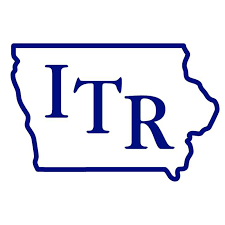Iowa banks’ loans and deposits up in 2020, but net income dips

Loan volume at Iowa-chartered banks increased by 5.8% in 2020 over 2019, according to the latest data filed with the Federal Deposit Insurance Corp. Iowa banks recorded nearly $68.1 billion in active loans on their books as of Dec. 31, with modest increases in charge-offs and noncurrent loans.
The FDIC fourth-quarter and full-year data released this week shows that Iowa’s banking industry continues to demonstrate resilience and support Iowans’ financial needs despite ongoing economic challenges, the Iowa Bankers Association said in a statement.
“Iowa banks continue to provide a bridge to the other side of this pandemic for our small business, farm and consumer customers,” said John Sorensen, the IBA’s president and CEO. “We are proud of the thousands of bankers who worked tirelessly to deliver 111,000 Paycheck Protection Program loans to help our small businesses preserve Iowa jobs. And, we look forward to supporting the renewal and economic growth soon to be fostered by the unprecedented vaccine development and deployment.”
Reduced spending and government stimulus payments helped to increase the overall savings rate for Iowans, resulting in deposit growth industrywide. Total deposits at Iowa banks were $88 billion at the end of 2020, up 16.7% from year-end 2019 when deposits totaled $75.4 billion.
Net income for the Iowa banking industry was $1.13 billion for 2020 — down 4.4%, or $52 million, from 2019. That performance far outpaced the year-over-year change in net income for all U.S. banks, which declined by 36.5%. Return on assets, another indicator of overall bank performance, declined to 1.14% from 1.33% at the end of fourth quarter 2019. Iowa-chartered banks’ total assets amounted to $105.4 billion at year-end 2020.
Nationally, FDIC-insured banks and savings institutions earned $59.9 billion in the fourth quarter of 2020, a 9.1% increase from the year prior, but full-year net income declined 36.5% to $147.9 billion, the agency said in its Quarterly Banking Profile.
The FDIC fourth-quarter and full-year data released this week shows that Iowa’s banking industry continues to demonstrate resilience and support Iowans’ financial needs despite ongoing economic challenges, the Iowa Bankers Association said in a statement.
“Iowa banks continue to provide a bridge to the other side of this pandemic for our small business, farm and consumer customers,” said John Sorensen, the IBA’s president and CEO. “We are proud of the thousands of bankers who worked tirelessly to deliver 111,000 Paycheck Protection Program loans to help our small businesses preserve Iowa jobs. And, we look forward to supporting the renewal and economic growth soon to be fostered by the unprecedented vaccine development and deployment.”
Reduced spending and government stimulus payments helped to increase the overall savings rate for Iowans, resulting in deposit growth industrywide. Total deposits at Iowa banks were $88 billion at the end of 2020, up 16.7% from year-end 2019 when deposits totaled $75.4 billion.
Net income for the Iowa banking industry was $1.13 billion for 2020 — down 4.4%, or $52 million, from 2019. That performance far outpaced the year-over-year change in net income for all U.S. banks, which declined by 36.5%. Return on assets, another indicator of overall bank performance, declined to 1.14% from 1.33% at the end of fourth quarter 2019. Iowa-chartered banks’ total assets amounted to $105.4 billion at year-end 2020.
Nationally, FDIC-insured banks and savings institutions earned $59.9 billion in the fourth quarter of 2020, a 9.1% increase from the year prior, but full-year net income declined 36.5% to $147.9 billion, the agency said in its Quarterly Banking Profile.
“Industry earnings, though down considerably for the year as banks braced for the recession, recovered for three consecutive quarters following sharp declines in the first three months of 2020,” American Bankers Association Senior Economist Rob Strand told the ABA Banking Journal. “While total bank lending ticked down slightly in the fourth quarter, it increased 3.3% for the year, bolstered by strong growth in commercial and real estate lending that was partially offset by declines in credit card use,” he said.
Banks also saw an “unprecedented inflow” of deposits in 2020 — a 22.6% increase “largely due to consumers and businesses seeking the safety and security of banks as well as cash infusions from federal stimulus programs,” Strand said.










